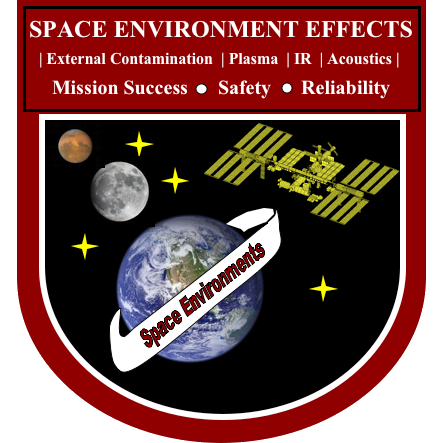Environments Team
 To ensure the safety of the International Space Station (ISS) crew, NASA Glenn Research Center’s Space Operations Division is supporting the analysis activities of the ISS Environments Team. The ISS environment is being analyzed in four main areas: ionizing radiation, acoustics, external contamination and plasma.
To ensure the safety of the International Space Station (ISS) crew, NASA Glenn Research Center’s Space Operations Division is supporting the analysis activities of the ISS Environments Team. The ISS environment is being analyzed in four main areas: ionizing radiation, acoustics, external contamination and plasma.
Additionally, Glenn oversaw the building, repair, and testing of an important piece of environmental hardware called the Plasma Contactor Unit (PCU). Glenn built the Hollow Cathode Assembly (HCA), an integral part of the PCU, and is storing spare HCAs for future use. The repair and retest of the third flight PCU occurred in 2008, and launched on ULF3, November 16, 2009. It is stored externally to the ISS as a pre-positioned spare. Glenn also built and tested the floating potential probe.
For over 10 years, the Environments Team has been working to preserve and improve astronaut health to contribute to the overall success of the ISS. They are currently working with Johnson Space Center, Marshall Space Flight Center, Boeing and International Partners on this project.
The harsh environment in space can be damaging to the human body. Space radiation is caused from high-energy charged particles (especially from the sun) that can be life threatening if the astronaut is not properly protected while performing experiments outside the ISS (Extra-Vehicular Activity or EVA). Radiation also affects ISS electronics so proper shielding is required.
Acoustics must also be considered because the astronaut’s hearing may be damaged. Contamination is a concern because material offgassing can coat sensitive instrumentation and solar arrays causing corrosion and reduced efficiency.
Plasma is the ionized gas that surrounds the ISS and is the final area of environmental concern. Because the ISS is negatively grounded with respect to the space plasma, the ISS will build up electrons on its surface. This causes an arcing hazard, which could put the astronauts at risk of electrical shock during EVA. Since simulating this environment safely on Earth is impossible, analysis and modeling is being performed using data collected from the PCUs, ground-based radar, and the floating potential measurement unit. An earlier instrument, the floating potential probe, provided approximately four months of data after the activation of the power module in 2000 and has since been jettisoned to space.
In addition to providing modeling and analysis oversight, Glenn successfully managed the building and testing of the PCU, which is considered the “grounding plug” of the ISS. While astronauts are working outside their spacecraft, the PCU generates an ionized gas that pulls excess electrons off the surface of the ISS and releases them into space. This process prevents the excess build-up of electrons and greatly reduces the risk of electrical shock.
Two PCUs are in operation during all EVAs on the ISS and are expected to last until 2020. Each PCU contains a gas feed system to supply xenon to the HCA. The power electronics unit inside the PCU controls and monitors the PCU. Three Glenn researchers received the “NASA Government Invention of the Year” award in 2001 as well as a patent in 2002 for the invention of cathode technology for the HCA (https://ntrs.nasa.gov/citations/20020060092).
Currently, Glenn is analyzing the performance and investigating issues related to the PCUs that have been on the ISS since 2000. This analysis is part of Glenn’s sustaining engineering effort of several hardware components on the ISS to ensure the safety of the crew.
